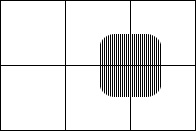Let me take you through the steps. I started with painted the borders black and varnished the surface with a clear acrylic varnish, no I didn't bother doing the bottom.
I bought a low quality grass from a dutch company called Berka Scenery which sells Static Grass (100 gram) for 6,75 euro. That's the same company that ripped me off with the stones I bought. The actual costs of making this stuff is probably way lower, at least it's about 6 times as cheap as the GW Static Grass.
The color isn't great, but that's actually not important if you dry-brush it. This article explains and shows some of the effects when you dry-brush static grass. The original color of Berka's grass is much greener than GW's grass. When dry-brushing you can do a lot with it.
I used three different colors of green grass and mixed these together to form one big bucket of grass. I'm not sure, but I believe the colors are called summer, spring and autumn.
| My precious spice |
| The tools for the job |
Application is pretty straightforward. The difficult part is getting a neat transition between the grass and the bare surface parts. I watered down some wood glue (1:2) and applied it with the medium brush. While working quickly I made sure the inner borders of the bare surface parts contained a thinned down layer of glue. Almost as if you dry-brush the inner borders with glue.
Not depicted on the picture, I used a strainer to apply the static grass mixture. After removing the excess grass, I thinned down the inner borders of the bare surface parts with the small brush. I did this while the glue was still wet.
| The results after applying the grass mixture |
I dry-brushed the static grass with the same paints and in the same sequence I used for the panel surface. I dry-brushed it until I got the desired results, not really using a clear method. It's a creative process.
TIP: Make sure all excess paint is removed from the brush, failing to do so could render the grass unrepairable.


